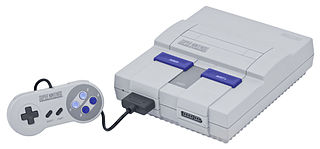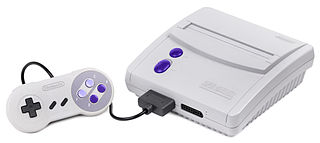SNES Capture
From SDA Knowledge Base
Contents
Console Information
| Resolution | 240 |
| A/V Outputs | S-video,Composite, RF |
| Framerate | 60.0988 progressive/30.0494 interlaced More Info |
| Models | SNES, SNES-101 (SNES Jr) |
A word of caution
The Super Nintendo (all models) outputs a video signal that is 240 lines of resolution. Recording this should not be a problem if you are using a standard definition capture device (one that only has composite/S-Video inputs) or a DVD recorder. You may run into problems if you are using a capture device that is designed to record high definition footage to try and record video from your NES. Most high definition video capture devices do not support video resolutions that are this low. Unless your high definition capture device explicitly lists support for 240 lines of resolution, it is safe to assume that it will not be able to record video from the SNES and you will need a standard definition capture device to record the footage. Two commonly used capture devices that support 240 lines of resolution are the Dazzle DVC100 and the Ez-Cap.
Super Nintendo Entertainment System (SNES)
The standard model SNES has a multi-out A/V connector in the back. The standard A/V cables that came with the system include the standard red white and yellow (composite video) connectors. This same connector is used by the Nintendo 64 and the Gamecube. You can use the standard A/V cables that are included with the SNES and connect them to your recording equipment to get video footage that is acceptable for SDA. While the standard A/V cables that come with the SNES are composite video, the SNES is also capable of outputting S-Video. Nintendo did not release an official S-Video connector for the SNES, however you can purchase a third party set of cables that includes it. S-Video provides superior picture clarity and quality and it is strongly preferred over composite video.
SNES-101 (SNES jr)
The redesign of the SNES offers some dramatic improvements in the reliability of loading games, but takes a major step back in video quality. The NES-101, also known as the top loader or the NES II featured a new top loading system for inserting cartridges. The NES II also uses a new and more reliable 72 pin connector. Nintendo also eliminated the lockout chip. These improvements allow the top loader to successfully load games much more consistently than the standard NES. Unfortunately Nintendo eliminated the Composite Video output. The only video output the top loader has is RF.
It is possible to modify the NES Toploader to add composite video output and RCA audio out. This will allow for the Toploader to output video and audio that is of the same quality as the original NES. This modification is acceptable by SDA's rules. You can perform the modification yourself by following the steps here. There are people online that will do it for you for a reasonable price
If you absolutely cannot get your NES Toploader modified, you can use a VCR to convert the RF signal to a RCA composite video and audio outputs. Connect the RF input from the console to your VCR and then connect your RCA cables to the A/V out section of your VCR to your splitters or DVD recorders. The quality of your footage will suffer because of this.



